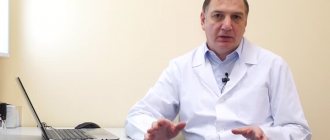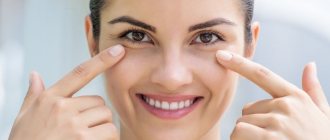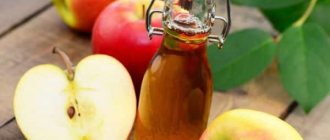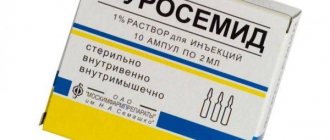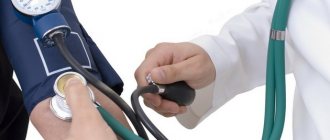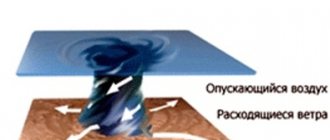We are accustomed to perceiving hypertension (increased blood pressure) as a disease characteristic of older people. Usually, those suffering from high blood pressure take medications prescribed by a doctor and cope with it at the very least. But you can treat hypertension in a different way, without drugs, or rather, not even treat it, and not create conditions for increased pressure. How it works?
In fact, hypertension is not a disease, but a compensatory reaction of the body to insufficient blood supply to a vital organ - the brain. This reaction is aimed at survival, because it is impossible to reduce the blood supply to the brain: it is life-threatening. And the body knows this.
Therefore, in order to preserve the life of the whole body, he is forced to create some uncomfortable conditions for its individual parts. Thus, an increase in blood pressure of only 15 mm Hg. Art. already disrupts cellular nutrition. Hence all the unpleasant symptoms associated with “high blood pressure,” as we say.
The reason for about 70% of cases of high blood pressure is insufficient blood supply to the brain.
Is hypertension forever?
It is generally accepted that hypertension is incurable.
Is it really? Before answering such a question, let’s define the concept and related terms. Hypertension is a disease characterized by a chronic increase in blood pressure. Arterial or blood pressure is the force with which blood presses on the walls of blood vessels. It increases from time to time, and sometimes remains constant. Indicators of high blood pressure also vary, sometimes these are minor deviations from the norm, and sometimes they reach a critical level. If we are talking about constant and very high blood pressure, which is difficult to treat, we mean hypertension.
Hypertension is distinguished: essential (or primary) and symptomatic (secondary). The primary does not have a clear cause; it is caused by a combination of certain factors to which any person is exposed. People with a genetic predisposition are most at risk. Hypertension that occurs against the background of another disease is called secondary. Then persistent hypertension is correctly called one of its symptoms.
The disease is closely related to dysfunction of the cardiovascular system. It forms a vicious circle: frequent attacks of high blood pressure provoke pathological changes in blood vessels and heart muscle, and vice versa, cardiovascular diseases lead to an increase in indicators.
A particularly dangerous condition is called hypertensive crisis. In this case, sudden changes in pressure are observed, which cause prolonged vascular spasm and, as a result, oxygen starvation of tissues and nutrient deficiency in the body.
Is this disease treatable? It is possible to talk about a complete cure of essential hypertension only in the first two stages of the development of the pathology. There are three stages of hypertension: early (mild, mild), moderate and severe. If the disease is diagnosed early, it is easier to cope with the disease and there is a greater chance of defeating it forever. You don't even have to use drug therapy for this.
For the disease to go away, it is enough to adjust your lifestyle by eliminating harmful factors.
Is it possible to cure a symptomatic disease? In the case of secondary hypertension, the chances of recovery are greater, especially if it has not taken a malignant, irreversible form. The main difficulty is to detect the underlying disease in time. If treatment of the disease that caused symptomatic hypertension is successful, the pressure will completely normalize.
The first stage of hypertension is different in that it is difficult to detect. Therefore, early detection is the key to full recovery. The pressure rises slightly and periodically, the indicators remain within the range (140/90-159/100). There are practically no symptoms, with the exception of minor manifestations:
- sometimes my head hurts a little;
- fatigue appears more often than usual;
- having problems sleeping;
- occasional dizziness or nosebleeds occur;
- bouts of irritability.
If you don’t catch the disease at this moment, then you will have to live with it for the rest of your life.
In rare cases, the disease is cured at the second stage. Although this can hardly be called a complete relief from the disease. Signs of pathology disappear for a long time, but there is always a fear that they will make themselves felt again. In such a situation, a person must learn to live differently and not give the disease a chance to return. Even if you don’t have to constantly take medications, a “former” hypertensive patient always needs to be on guard.
The second stage is characterized by severe symptoms:
- insomnia;
- severe and frequent headache;
- nausea, vomiting;
- heart rhythm disturbances;
- pain in the heart area;
- vision problems;
- numbness of the limbs.
Subject to pathological changes: kidneys, heart, brain, visual organs suffer. The blood pressure almost never returns to normal without medication, the readings become higher (160/100-179/109).
What does hypertension lead to?
High blood pressure can cause other problems. The thing is that when such a condition occurs, the blood flow is progressively disrupted, therefore, the pressure also increases compensatoryly. It leads to:
- deterioration in the patient’s quality of life;
- the need to take medications to treat concomitant diseases of the heart and circulatory system;
- deterioration of the condition of the cervical vertebrae, which lose their elasticity and may become displaced;
- deterioration of the heart muscle, which can cause the development of ischemic stroke.
To avoid the consequences, you need to begin muscle restoration to restore their elasticity and firmness. To do this, it is best to use special gymnastics and exercises.
Manifestations of secondary hypertension
Since secondary hypertension is a syndrome of another disease, it shows itself somewhat differently. Symptoms of concomitant pathology join the usual signs of the disease. These include:
- kidney diseases (lower back pain, protein in urine, swelling);
- cardiovascular diseases (heart pain, arrhythmia, shortness of breath);
- disorders of the endocrine system (characteristic fullness occurs in the face and body, while the arms and legs are thin);
- diseases of the central nervous system (nausea, dizziness, loss of memory, coordination).
In addition to the signs of these diseases, specific indicators indicate secondary hypertension: persistent arterial hypertension, no result from the therapy used, panic attacks.
Signs of high blood pressure - hypertension
The presence of hypertension can be determined by the following body signals:
- headache;
- dizziness;
- noise in ears;
- nosebleeds;
- insomnia;
- heartbeat;
- chest pain;
- fatigue;
- increased sweating;
- swelling of the ankles;
- visual disturbances;
- dyspnea.
How to recover?
If hypertension develops as an independent disease (primary), medications will not be needed to successfully treat it at an early stage. How to overcome the disease? The most effective remedy is to remove all provoking factors from the patient’s life. In addition, blood pressure is normalized using traditional medicine and other alternative treatment methods.
Factors that exclude:
- errors in diet;
- lack of physical activity;
- increased stress on the psycho-emotional system;
- physical stress;
- consumption of alcoholic beverages and tobacco products.
There are situations when it is impossible to eliminate the provoking factor, or it is difficult to do so. This happens with the development of a special form of hypertension: drug-induced. In this case, high blood pressure occurs as a side effect of taking certain medications. It is advisable to remove such drugs or find an alternative to them, then hypertension will disappear by itself. If this cannot be done, the dosage and dosage regimen of the drug are reviewed; it may be worth taking a pause for some time.
How to treat hypertension without drugs
Very often, blood pressure medications have contraindications and side effects. Many medications relieve painful symptoms without affecting the cause of the pathology. Increasingly, doctors recommend treating hypertension without pills. If diagnosed early, the problem can be resolved within 3 weeks. To fight the disease without pills, you need to:
- adjust nutrition;
- get rid of excess weight;
- increase physical activity.
Patients who suffer from hypertension need to change their lifestyle, work and rest patterns. In 3 weeks you can significantly improve your health without using medications. To do this you need to apply:
- breathing exercises;
- therapeutic exercises;
- acupressure;
- taking herbal decoctions;
- foot baths;
- treatment with leeches;
- magnetic bracelets;
- taking magnesium;
- aromatherapy.
Rules of patient behavior
Food is a means of livelihood, a way to maintain health in the body. Therefore, proper nutrition is a very important component of any treatment complex.
What is not advisable to eat:
- salt is enemy number 1 for hypertensive patients, since it is dietary sodium, and it retains fluid in the body and causes vasoconstriction; food is prepared without salt, and then a little is added to the already prepared dish;
- all products containing a lot of salt (chips, crackers, sausages, smoked meat and fish, canned food, lard);
- fatty and fried foods are prohibited, as are products containing animal fats; they contain a lot of cholesterol, which is deposited on the walls of blood vessels;
- flour, confectionery and all kinds of sweets (buns, cakes, chocolate, creams, pies, sweets) - they add extra pounds, aggravating the situation with blood pressure;
- strong tea or coffee is also excluded - these drinks tone the blood vessels, increasing blood pressure;
- foods with spicy seasonings excite the nervous system, provoking the production of adrenaline, which constricts blood vessels.
How to enrich your diet:
- low-fat dairy products;
- vegetable oil;
- fresh fruits and vegetables;
- dried fruits;
- foods rich in potassium, which strengthens the heart (raisins, bananas, prunes, melons, tomatoes, beans, seaweed);
- steamed food;
- vegetable soups instead of meat broths;
- lean meat (turkey, chicken, veal);
- lean fish;
- foods containing a lot of magnesium (cabbage, jacket potatoes, rose hips, bran bread, walnuts, currants, greens, oat porridge, millet, buckwheat, rice);
- vitamin C, which is abundant in sea buckthorn, lemons, oranges, grapefruits, and currants.
Regular physical exercise strengthens the endurance of the heart and trains blood vessels, increasing their elasticity. Physical activity improves blood circulation, saturates the blood with oxygen, speeds up metabolism, and eliminates excess weight.
All this is very important to maintain normal blood pressure.
The following types of physical activity are suitable to combat hypertension:
- morning work-out;
- physiotherapy;
- stretching;
- walking;
- cyclic exercises (light running, cycling, swimming, skiing).
Any physical activity should be regular, long-lasting (30-40 minutes a day), and not excessive. Strength exercises that involve lifting weights, static loads, and sudden movements should be excluded.
Adequate rest is important for the normal functioning of human internal organs and systems. Overfatigue negatively affects the functioning of the heart and blood vessels: the heart muscle weakens, blood vessels lose elasticity. By rest we mean a change of activity, physical and emotional unloading.
Weekends or vacations should be spent with benefit for body and spirit. Rest should be active (hiking, fishing, cycling). It is worth visiting museums, theaters, cinemas, exhibitions more often, being in nature, breathing fresh air, admiring beautiful landscapes. The best option is to recuperate at a medical resort, sanatorium, or in places that are located in the same climate zone as the area of residence.
While resting, you should not think about problems, work, or household chores. The ability to relax and distract yourself strengthens your resistance to stressful situations. Sleep also helps to restore strength after a long day of work, full of conflicts, problems, family troubles and physical stress. Without enough sleep, a person overloads the nervous system, which is directly involved in regulating blood pressure levels.
You need to sleep in moderation, at least seven hours a day. For a sound sleep, it is necessary to ventilate the sleeping area, create favorable conditions (silence, twilight, make a comfortable bed). It is advisable to take a quiet walk in the fresh air before doing this. If you have difficulty falling asleep, take a herbal sedative (motherwort, valerian).
In order to avoid becoming a victim of hypertension, it is very important to radically change your perception of life and set your priorities correctly. It’s not for nothing that they say: if you can’t change your circumstances, change your attitude towards them.
Indeed, many health problems begin under the influence of prolonged and frequent stress. Depression is a bad ally in the fight against illness. Dissatisfaction with life, low self-esteem, envy, anger, resentment, the desire to see everything in a bad light depress the nervous system, leading to its excessive stimulation or inhibition, apathy. The stress hormone, adrenaline, causes vasospasm, thereby worsening their condition. After strong experiences, a person feels heaviness and pain in the heart, but it regulates the strength of blood flow in the vessels.
You need to live with optimism, a smile, be able to find positive aspects in everything, and not take problems that arise to heart. It is important to find your own ways of relaxation, restoring mental balance, and receiving positive emotions. In the frantic rhythm of modern life, be able to pause and take a breath. If negativity accumulates without finding a way out, it destroys health from the inside.
Tobacco products and alcohol-containing drinks increase blood pressure, worsen the condition of blood vessels, overload the heart, and lead to the accumulation of toxic substances. If your goal is to get rid of hypertension forever, be sure to quit smoking. But this should be done not abruptly, but gradually. When the body has already adapted to daily “doping”, an unexpected change in habits will lead to another stress, which again is fraught with an increase in performance.
It is believed that in moderate doses, alcohol is harmless and even beneficial. But it is difficult to adhere to boundaries in this matter; there is always a risk of crossing a fine line, beyond which the slow but sure destruction of health begins. Even small but regular consumption of alcohol leads to alcoholism over time. Therefore, it is better not to take any half measures: a complete, decisive and irrevocable cessation of alcoholic beverages.
Treatment of hypertension without drugs with folk remedies
A comprehensive effect on the body in order to reduce high blood pressure recommends the use of natural products. Traditional folk therapy helps with hypertension in three ways:
- the use of plants that will reduce blood pressure;
- the use of herbs that have a sedative effect;
- use of recipes that have a diuretic effect.
It is useful to take a mixture of beet and carrot juices, where a spoonful of honey is added to 250 ml of the composition. Drink a third of a glass twice a day. A decoction of herbs has a positive effect on improving the condition of hypertension. Add a spoonful of the mixture to a glass of boiling water and drink 30 ml three times a day. The collection includes parts:
- motherwort – 5;
- hawthorn, astragalus – 2;
- mint, birch leaves, knotweed - 1.
- How often should you wash your hair with shampoo?
- How to cook mushrooms correctly. How long to cook frozen, dried or fresh mushrooms
- How to cook horseradish: homemade recipes
Medicinal herbs
There is a drug containing natural plants that restores vascular tone. Normalife is effective at the initial stage of the disease. It is no less effective to use medicinal herbs in treating blood pressure. It is useful to drink tea, using motherwort, valerian root, and cumin instead of tea leaves. You can prepare a remedy that is consumed half a glass three times a day. The course of admission is 2 weeks. Necessary:
- soak 50 g of oats in three liters of water for 4 hours;
- make a decoction of a glass of boiling water and 70 g of elecampane root;
- mix the ingredients;
- boil;
- strain;
- add 2 tablespoons of honey.
Corn flour
Corn helps treat blood pressure without medication. Vitamins and microelements in the composition help normalize blood circulation, increase the elasticity of the walls of blood vessels, and cleanse them. A mixture is made, which is drunk in small portions throughout the day for 3 weeks. To prepare you need:
- take 300 ml of cold boiled water;
- add a spoonful of corn flour;
- mix the composition thoroughly.
Garlic tincture
This vegetable has unique properties. When garlic is crushed, allicin is formed - a substance that helps reduce the tension of the walls of blood vessels, activates blood flow, and removes cholesterol. All this helps cure hypertension. It is useful to make a tincture, which is taken for 3 weeks - 20 drops three times a day before meals. The recipe will require:
- chop 2 heads of garlic;
- pour vodka – 250 ml;
- add mint to soften the taste;
- keep in the dark for 12 days;
- strain.
St. John's wort infusion
The use of this plant will be beneficial at the onset of the disease. St. John's wort infusion relieves stress, improves mood, and prevents the formation of blood clots. The use of the medicine helps to increase the elasticity of blood vessels, dissolve fat deposits, and normalize metabolic processes. Abuse of infusion can increase blood pressure; there are other contraindications. According to the recipe you need:
- take a spoonful of herbs;
- pour a glass of boiling water;
- soak for 20 minutes in a water bath;
- strain;
- drink a spoon half an hour before meals.
Decoction of lingonberry leaves
This forest plant has a diuretic effect; when used, metabolic processes are accelerated, toxins are removed, weight is reduced, and the walls of blood vessels are strengthened. It is recommended to drink the decoction for four weeks, three times a day. Dosage for the treatment of hypertension – 50 ml. To prepare a natural medicine you need:
- take 50 g of lingonberry leaves;
- add 2 glasses of water;
- boil for 20 minutes;
- leave for 5 hours;
- strain.
Treatment
Is it possible to cure hypertension of secondary origin? In order to forever rid yourself of hypertension that has arisen against the background of an underlying disease, you must first of all detect it. A complete examination and visits to various specialists will lead to the desired results.
Having established an accurate diagnosis, the form of the disease is determined. If the disease can be treated with medication, then it is enough to complete the prescribed course using tablets, injections and other methods. If therapeutic measures are successful, pressure is forgotten forever.
Most often, the need for surgery arises due to health problems. The decision to undergo surgery is made when a person’s condition threatens his life. For example, with stenosis (narrowing) of a section of an artery, congenital or acquired, reaching critical limits (the lumen narrows by 50% or more). In this situation, deterioration of blood flow leads to secondary arterial hypertension, while the heart and blood vessels are affected, and tissues of other organs (kidneys, eyes, brain) are destroyed.
Is it possible to get rid of hypertension permanently with surgery? An operation to remove the problem area and plastic surgery of the damaged vessel will help end high blood pressure forever, but only if it is carried out in a timely manner.
Rehabilitation
A rehabilitation specialist helps patients with adjustments to their home and work environment and recommends some compensatory means. The rehabilitologist also collaborates with other specialists, including:
- neurologist;
- therapist;
- cardiologist;
- psychologist.
For patients suffering from civilizational diseases, which include hypertension, a rehabilitation specialist will help in choosing the optimal mode of movement. This will ensure that the person avoids overload and at the same time is active with the desired effect (for example, weight loss).
Living with hypertension
If the disease progresses and it cannot be completely cured, accept the diagnosis and learn to live with it.
The lifestyle of a hypertensive person differs from that of a healthy person. What is he like? Ideally, a person suffering from hypertension must comply with a number of requirements:
- Switch to a different diet - a salt-free diet, a different method of cooking (food is boiled, stewed, steamed), give up tasty but unhealthy food, treat yourself not to sweets and smoked meats, but to fruits, vegetables, and nuts.
- Quit bad habits.
- Provide regular moderate physical activity.
- Engage in auto-training or use other available methods for relaxation and increase stress resistance (communication with pets, calm dancing, reading, cinema, music, hobbies, travel). Fundamentally reconsider your relationship with the outside world and with yourself.
- Control your weight.
- Monitor your blood pressure.
- Follow the doctor's recommendations, take prescribed medications in the prescribed dose according to a specific regimen.
- Many hypertensive patients are weather dependent, so monitor the weather conditions and take the necessary precautions - prepare in advance for possible hypertensive crises.
- Patients should not be overcooled; also avoid prolonged exposure to the sun.
- It is not recommended to change the climate suddenly.
- It is better to give up conquering the mountains and the depths of the ocean; a holiday at the Dead Sea would be an excellent alternative.
- Get enough sleep.
- Take care of a reasonable combination of work and rest.
- Monitor edema, and fight it when it first appears (use diuretics).
In addition, hypertensive patients should always have a special first aid kit on hand. Contents of medications in it: for relief of hypertensive crisis and daily use. Here is an approximate list of necessary medications that you carry with you:
- "Captopril", "Lisinopril", "Enalapril" - ACE inhibitors; during a crisis, place the tablet under the tongue and dissolve;
- “Metoprolol”, “Anaprilin”, “Atenolol” - beta-blockers; the crisis is relieved by intravenous injection;
- “Nifedipine” (under the tongue), “Verapamil” (intravenously) – vasodilators;
- "Furosemide" (intramuscular or intravenous for quick effect);
- “Valerian”, “Motherwort”, “Peony” - sedatives;
- “Baralgin”, “Pentalgin”, “Citramon” - analgesics;
- "Semax" - regulatory peptides (stabilize the functioning of the brain and the whole body, relieve the crisis).
You can live with hypertension for many years; a person gradually gets used to the prohibitions and restrictions, and following such rules is useful even for healthy people. Only early diagnosis and optimal lifestyle correction will stop the disease. To completely eliminate symptomatic hypertension, you may have to undergo surgery.
Breathing exercises
To avoid oxygen starvation of the brain, and, consequently, sudden surges in pressure, you need to do special gymnastics. According to Shishonin’s method, you can perform the following exercises:
- While sitting, you need to keep your posture straight and relaxed. The exercise consists of first taking 4-5 sharp breaths through your nose, while keeping your mouth closed. A short pause is required between breaths. Then you need to exhale smoothly. It is optimal to carry out 20 approaches with an interval of 5-10 seconds.
- Whether sitting or standing, you need to take a comfortable position. Wrapping your arms around yourself, turning your torso to the right, you need to take a sharp breath through your nose. Turning to the starting position, you need to exhale through your mouth. Then repeat the exercise with turns to the left. It is enough to do 8-10 turns in one exercise.
- The third exercise is done in a standing or sitting position, but always with a straight back. You need to tilt your head to the side and try to press your ear to your shoulder. While bending over, you need to take a sharp breath in through your nose, and exhale smoothly through your mouth. Do the same exercise with your head tilted to the other side. 8-10 repetitions per approach are enough.
These exercises are not difficult to perform and do not require additional equipment, so they can be performed at any suitable time, even during your lunch break at work.
